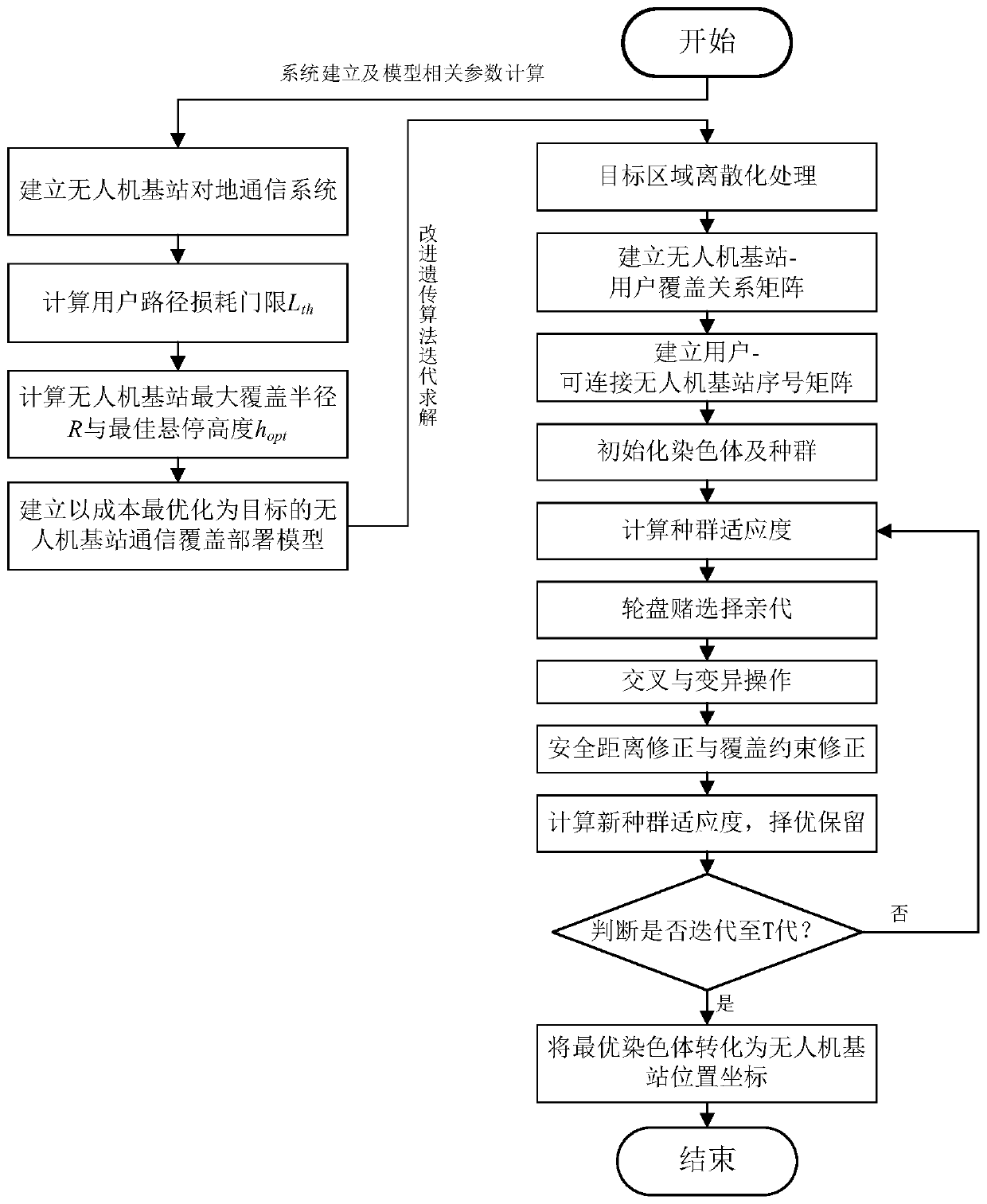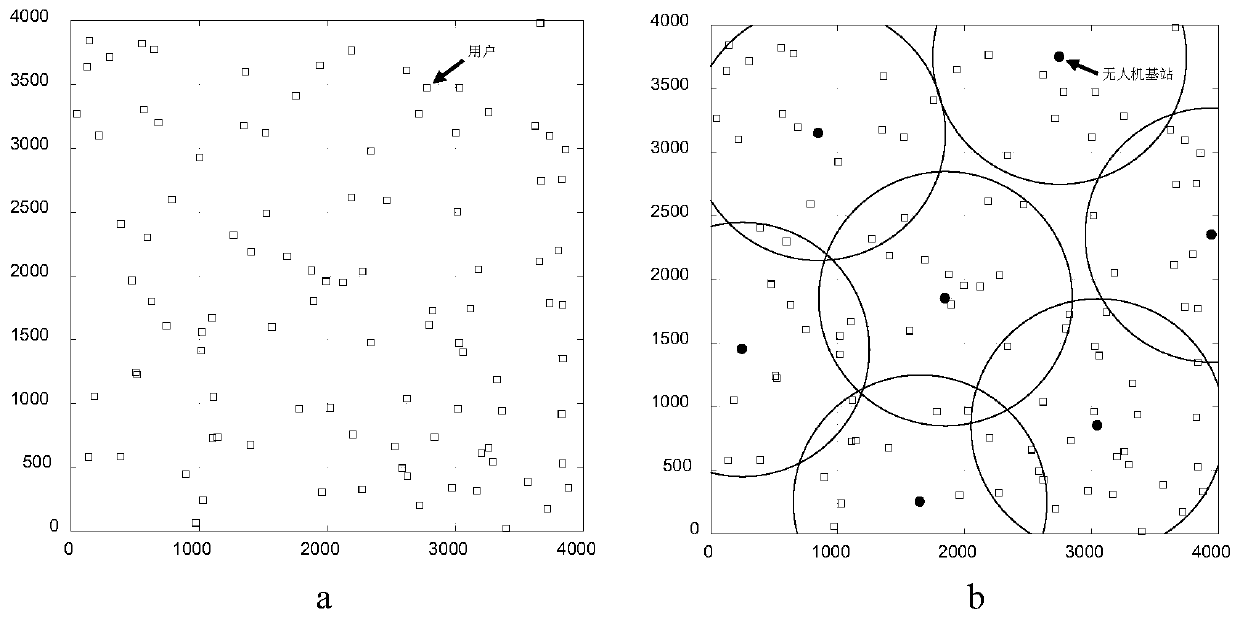Cost optimization unmanned aerial vehicle base station deployment method based on an improved genetic algorithm
An improved genetic algorithm and cost optimization technology, applied in the field of communication, can solve problems such as the difficulty of optimizing the deployment cost of UAV base stations, and achieve the effect of reducing solution space redundancy, reducing complexity, and removing infeasible solutions
- Summary
- Abstract
- Description
- Claims
- Application Information
AI Technical Summary
Problems solved by technology
Method used
Image
Examples
Embodiment Construction
[0026] Below in conjunction with accompanying drawing, the embodiment of the present invention and effect are described in further detail:
[0027] refer to figure 1 , the implementation steps of the present invention are:
[0028] Step 1: Establish a UAV base station-to-ground wireless communication coverage model.
[0029] Randomly distribute m users within the ground rectangular area with an area of X km×Y km, and the user set is denoted by U;
[0030] Assuming that the drone base station is located above the target area to provide communication services for ground users, assuming that each user can only connect to one drone base station, considering that the drone base station can provide users with better services, the optimal receiving signal-to-noise Assign users than the principle.
[0031] Step 2: Calculate the maximum coverage radius and optimal hovering height of the UAV base station.
[0032] 2a) Assume that the transmit power of the UAV base station is P t ...
PUM
 Login to View More
Login to View More Abstract
Description
Claims
Application Information
 Login to View More
Login to View More - R&D
- Intellectual Property
- Life Sciences
- Materials
- Tech Scout
- Unparalleled Data Quality
- Higher Quality Content
- 60% Fewer Hallucinations
Browse by: Latest US Patents, China's latest patents, Technical Efficacy Thesaurus, Application Domain, Technology Topic, Popular Technical Reports.
© 2025 PatSnap. All rights reserved.Legal|Privacy policy|Modern Slavery Act Transparency Statement|Sitemap|About US| Contact US: help@patsnap.com



